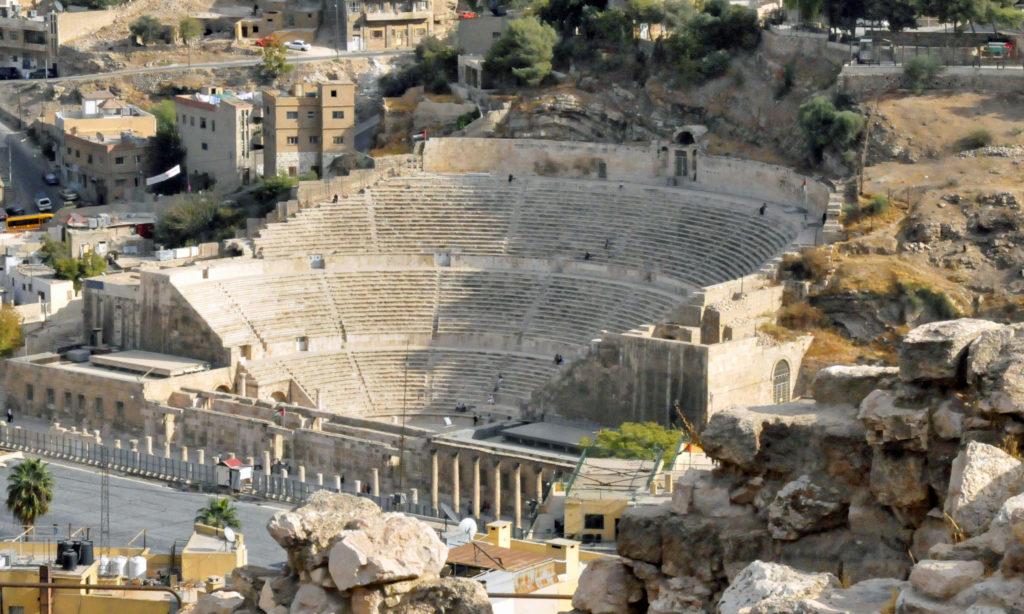
A theatre was essential to life in ancient Roman cities. One of the best examples of a Roman theatre is in Amman, the capital of modern Jordan.
Amman includes evidence of human occupation since 7,000 B.C., making it one of the world’s longest continuously inhabited sites. In about 1300 B.C., the city, named Rabbath-Ammon, became the capital of the Kingdom of Ammon, which Biblical King David later captured and made part of his United Monarchy. Rabbath-Ammon subsequently fell under the control of Assyria, Babylon and then Persia. Greeks under Alexander the Great defeated the Persians in 332 B.C. In the third century B.C., Ptolemy II Philadelphus took control of Rabbath-Ammon from a rival Greek ruler and renamed the city “Philadelphia” in his honor. Romans under Pompey captured the area in 63 B.C. and made Philadelphia one of the ten semi-autonomous cities of the Decapolis mentioned in the New Testament.
In about 161 A.D., during the reign of Emperor Antonius Pius, the Romans erected a theatre near the center of the city. Following the Greek example, the theatre was cut into a hillside and faced north so theatregoers could avoid the sun. The steeply banked seating area, with a capacity of about 6000, was divided into three sections. The area closest to the stage was for the elite, including the military. The highest section, called “the gods,” was for ordinary citizens who could hear from the stage because of the theatre’s clever acoustical design. After the conquest of the area by the Muslims in 635, the theatre fell into disrepair. Beginning in 1957, the Jordanian government began restoring the theatre, using some modern materials. Today, the theatre, which hosts performing events and is home to the Jordan Museum of Popular Traditions and the Folklore Museum, is one of Jordan’s most popular destinations.